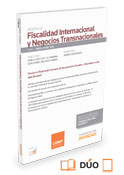
The good weather is here, and we are starting to enjoy the sun. Well this beautiful season of blooming flowers coincided with blooming new proposed rules presented by the OECD, on May 6, 2022. The OECD released a public consultation document with respect to the Pillar One – Amount A: Regulated Financial Services Exclusion[1]. This is the fifth in a series of public consultations relating to nexus and revenue sourcing, tax base determinations, scope, and the extractives exclusion, on Pillar One-Amount A Model Rules that the OECD is expected, also, to release over the coming months. The OECD invited interested parties and stakeholders to provide comments and observation by May 20th at the latest.
The proposed document written in a more narrative format as opposed to Model Rules format, determine the applicability and calculation of Amount A for Regulated Financial Institutions (“RFI”). The Regulated Financial Services Exclusion would exclude from the scope of Amount A the revenues and profits from RFIs.
The defining character of this sector is that it is subject to a unique form of regulation, in the form of capital adequacy requirements. This is why, the scope of the exclusion derives from that requirement, meaning that Entities that are subject to specific capital measures (and only those) are excluded from Amount A.
As exposed in the document, the main purpose of this consultation paper is to receive observation on the exclusion, hoping to assist members of the Inclusive Framework on BEPS in refining and finalizing the important rules. It is important to note that the working document does not propose the final views of the Inclusive Framework members. It only presents the work undertaken to date suitable for consultation. Further changes may be made to the proposed rules.
Applying the Regulated Financial Services Exclusion:
Amount A proposes to reallocate a portion of the global profit of multinational groups (“MNEs”) from their Residence (home) and Source (host) jurisdictions to their Market (sales destination). It applies to groups with a global turnover above EUR 20 billion of revenue and a profit margin of 10%.
The consultation document presents and definessix types of RFIs: Depositary Institution; Mortgage Institution; Investment Institution; Insurance Institution; Asset Manager; a Mixed Financial Institution. One last category is added for a limited type of service entity that exclusively performs functions for an RFI. Each definition proposes three elements: 1- that the institution would be licensed to carry the listed activity in the Group Entity´s jurisdiction; 2- a capital-adequacy requirement; and 3- a threshold activity requirement.
The proposed rules are applied by entity, where when it meets the definition of an RFI, then it would be excluded from calculations relating to Amount A.
The consultation document sets out seven steps that a qualifying Group would follow to apply Amount A as a whole. Steps Two and Three are specific to the Regulated Financial Services Exclusion.
The seven steps for the application of the Regulated Financial Services Exclusion are:
Step 1: The Group applies the general scope rules to the entire Group, this includes financial services activities that would be subject to the exclusion. Only, if the Group has more than EUR 20 billion of revenue and a profit margin above 10% (taking into account the average test and the prior period test) it proceeds to step 2.
Step 2: The Group recalculates the in-scope revenue by excluding the revenue from Regulated Financial Services. If the revenues are still above EUR 20 billion, this means that the Group is in scope and should continue to step 3.
Step 3: The Group recalculates only the Regulated Financial Services profits to evaluate the 10% profitability threshold and compare the remaining in-scope profits to in-scope revenues. If the 10% profit margin is met, the Group is in scope and must proceed to step 4.
Step 4: The Group applies the nexus and revenue sourcing rules.
Step 5: The Group applies the rules for determining and allocating taxable profits to a Jurisdiction.
Step 6: To eliminate double taxation, the excluded the Regulated Financial Services profits will be excluded from the mechanism for eliminating double taxation arising from Amount A.
Step 7: File the necessary documentation for the purposes of administration and reporting. This process will set later as part of the provisions on tax certainty.
Step Two – Identification of Regulated Financial Services Activities and application of the Revenue Threshold to in-scope revenue:
The purpose of Step Two is to reassess the revenue threshold at the level of the Group by only looking at the in-scope revenue.
The proposed rules present two “simple” approaches to reduce the compliance burden.
First, the Group can identify only its largest RFIs and subtract the total third party revenues of such entities from the consolidated revenue to identify RFIs and subtracting revenue till the total falls below the EUR 20 billion thresholds.
The second approach allows the Group to identify in-scope entities (non-RFIs) and add together all of their revenue without adapting intra-group revenue. If the total is below the threshold, the Group would not need to calculate Step Three. This approach means that a Group or segment may over-include revenue because intra-group revenue is not subtracted.
This test is intended to provide a filtering function using a rule that is relatively easy to apply and document, and to be reviewed by tax administrations. We assume that both tests should get to the same result.
What is an RFI? Apart from the requirement to be licensed, and to meet the capital-adequacy requirement and some other defined standards, the following are considered to be RFIs:
Depositary Institution is an institution that accepts deposits in the ordinary course of a banking or similar business, where at least 20% of them are liabilities.
Mortgage Institution: is an institution that accepts repayable funds from the public for the purpose of granting credits for its own account in the ordinary course of a banking or similar business provided the credits are granted directly to individuals for the purchase of real estate where they equal or exceed 75% of the Group Entity’s total gross income.
Investment Institution: is an institution that provides one or more of these activities:
- dealing, broking, or trading in financial assets for its own account,
- holding securities in inventory, and/or
- hedging customer transactions, and/or
- participating in underwriting, mergers and acquisitions, syndication, and securitization and providing financial services related to those activities, and/or
- holding, transferring, administering, controlling, or distributing financial assets for others’ accounts.
- where said activities are equal or exceed 75% of its income.
Insurance Institution: is an institution that is subject to solvency standards that incorporate a risk-based capital measure and whose income is derived at least 75% from insurance and annuity contracts or holds at least 75% of the aggregate value of the assets for such activities.
Asset Manager: is an institution that administers, manages, or distributes interests in an investment fund or real estate investment vehicle, financial assets, or money on behalf of others and where such listed activities represent at least 75% of its income.
Mixed Financial Institution: is an institution engaged in more than one business activity as a depositary, Investment institution, insurance institution, or asset manager, holding a minimum level of capital as required for each respective RFI category, and whose income is at least 75%.
RFI Service Entity: is an entity that is wholly owned (directly or indirectly) by the ultimate parent entity of the Group and that performs services exclusively for the benefit of the other RFI members of the Group.
Step Three – Identification of the excluded and e in-scope profits
This step is necessary to accurately identify the profits and profitability of non-Regulated Financial Services Activities within the Group as a standalone business
The Group must identify every in-scope entity and combine the in-scope entities into one consolidated bespoke segment for Amount A purposes
The proposed rules set out two methods to accomplish this: A “top-down” approach and a “bottom-up” approach.
The “top-down” approach consists of “backing out” the third party revenues and third party costs from the consolidated group or disclosed segment financials, and include the related-party revenues and costs arising at the level of non-excluded entities.
The “bottom-up” approach consists of recombining the non-RFI entities into a consolidated bespoke segment using segment accounting and/or management accounting principles. This means recognizing at once third party transactions by the non-RFI segment and transactions with the RFI segment, but not including revenue earned and costs incurred in relation to transactions between the in-scope entities.
After this segregation, the Group would make the relevant tax base adjustments as agreed in the rules for calculating the tax base. The resulting Adjusted Profit Before Tax amount is used as the numerator in the profit margin calculation. The denominator is the in-scope revenue amount.
The Group would need to reapply the profitability test to the new combined consolidated bespoke segment. If the profit margin of that bespoke segment is below 10%, It would not be subject to Amount A.
To be noted that once this proposed document would consist of the Model Rules, they would be used as substantive provisions to be included in the Multilateral Convention, which is intended to implement Amount A.
The proposed rules seem to represent some ambiguous inconsistencies. Just to mention one example, in the presence of 2 separate entities, who provide credit in the same jurisdiction, part of the same Group. Both entities could meet the all the aforementioned requirements, but only one of them performs deposits. It is the latter that would qualify as an RFI. The equitable outcome should be that both would qualify.
At the moment, the consultation had ended a few days ago. Let us wait and see whether the observations rendered by the public would influence the Inclusive Framework members in their decisions.
La opinión expresada en este artículo es exclusivamente del autor y no refleja ni puede ser relacionada con su entorno profesional.
[1] https://www.oecd.org/tax/beps/public-consultation-document-pillar-one-amount-a-regulated-financial-services-exclusion.pdf




